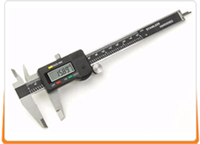 |
| Originally, gemstones used to be decorated by scratching figures, symbols or letters onto them. This in turn lead to the art of "Engraving". |
| |
| The origins of gemstone cutting can be found in India. Up until 1400 AD, there was very limited polishing done. This was mainly to improve lustre and remove unsightly blemishes. |
| |
| The manufacture of gemstones can be divided into 4 distinct areas: |
| • |
Engraved Gemstones |
| • |
Agates. |
| • |
Coloured Gemstones. |
| • |
Diamonds. |
|
| |
|
 |
|
| The aim of the cutter is to try and retain as much weight as possible whilst ensuring that the most attractive colour is visible through the table facet. It is also critical that the cutter adhere to certain angles and proportions in order to maximize overall brilliance in the gemstone. |
| |
| Engraving |
| Refers to Cameos, Intaglios, objets d'art and other ornamental pieces. |
| The oldest stone engraving consisted of cylinders that were engraved with symbols and figures and used as Seals or Amulets. |
| Today the main centre is Idar-Oberstein where 90% of the worlds gems are engraved. |
| |
| Coloured Gemstones |
| Cutting of gemstones is called lapidary work |
| Coloured gemstone cutting is one of the oldest art . a "Lapidary". |
| |
| Opaque Gemstones |
| Circular saws coated with diamond dust are used to first of all cut the rough into manageable pieces or by utilizing cleavage planes, which are directions of weakness in certain gemstones, with a small hammer. |
| Soapy water, oil or paraffin are used as a coolant. Final shaping usually occurs on a vertical roughly grained carborundum wheel cooled with water. |
| The preferred style of cut for opaque gemstones, heavily included stones or stones displaying "Optical Phenomena" is the "Cabochon" cut. |
| |
| Transparent Gemstones |
| The final shaping is done on a horizontal grinding wheel. The stones are cemented into a 4-6 inch holder called a "Dop" using a special cement or shellac. Nowadays, special clamps are used as well. "Dops" are guided at an angle related to the facet being cut. |
| |
| This is achieved either by inserting the wooden "Dop" into pre-drilled holes set at certain angles or by more modern devices used to control and ensure the proper angles are used. |
| |
| Cutting wheels are usually made of lead, bronze, copper or tin. Polishing powders usually consist of Carborundum, |
| |
| Diamond, Titanium or Carbide. The speed of the wheel, type of wheel and type of powder used all vary with the stone being cut. |
| |
| The final polishing takes place on a horizontal wheel, wooden cylinder or leather straps to remove the final traces of scratches and also to improve the lustre. |
| |
| Polishing compounds used are all finely grained and consist of Tripoli, Chromium Oxide, Diamond Powder, Garnet, Emery or Iron Oxide mixed with either water or in some cases Sulphuric or Acetic Acid. |
| |
| The Lapidary must consider a number of variables before cutting a gemstone. These include: |
| • |
The shape of the rough and how it can be utilized to maximize yield. |
| • |
How to ensure that the most attractive colour is visible when the stone is viewed in a face up position. |
| • |
The position of fractures or inclusions which could affect the clarity of the stone. |
| • |
The correct angles and proportions which will be needed to maximize brilliance. |
| • |
How to juggle these factors to maximize profits. |
|
| |
| |



